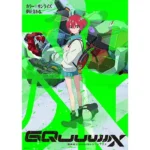SK Hynix Inc., the world’s second-largest memory chipmaker, experienced a notable turnaround in the last quarter of 2023, reporting profits after four consecutive quarters of losses. The surge in sales was primarily driven by high-performance chips like double data rate 5 (DDR5) and high bandwidth memory 3 (HBM3).
The company’s results, exceeding market expectations, have reinforced optimism for a recovery in the memory chip market. SK Hynix predicts that the ongoing AI boom will continue to propel the industry upward through 2025. In a strategic move to capitalize on this trend, SK Hynix plans to double its production capacity for HBM, anticipating a 60% average annual surge in demand.
While the capacity expansion is significant, it won’t lead to a drastic increase in overall output. The company is shifting focus towards high-value chips, including DDR5, while reducing legacy memory chip production. This strategic shift was evident in its fourth-quarter operating profits, which reached 346 billion won ($260 million), surpassing the market consensus.
In contrast to the 1.9 trillion won operating loss in the same period of 2022, SK Hynix’s recent performance marks a significant rebound. The improvement in the memory market, fueled by rising demand for AI server and mobile product chips, alongside increased average selling prices, contributed to this turnaround.
Sales in the October-December quarter soared by 47% to 11.3 trillion won, compared to 7.7 trillion won a year earlier. This rebound is particularly notable, considering the record quarterly shortfall of 3.4 trillion won in early 2023, amidst an economic slowdown and supply glut.
SK Hynix holds a unique position in the market as the world’s first developer of HBM chips and the exclusive provider of HBM3 to Nvidia, a leader in GPUs for high-performance computing and AI systems. Sales of DDR5 and HBM3 in 2023 saw a dramatic increase, spiking fourfold and fivefold, respectively, from the previous year. The launch of ChatGPT by Microsoft-backed OpenAI significantly fueled this demand.
Despite the positive quarter, SK Hynix reported an operating loss of 7.7 trillion won for the entire year of 2023, a downturn from the previous year’s profits. The company, however, remains optimistic, forecasting a rise in DRAM and NAND flash memory demands in 2024, with inventories expected to normalize by year-end.
In response to sector challenges, SK Hynix, alongside Samsung Electronics Co., another industry leader, had previously cut production of DRAM and NAND flash due to excess inventories. Analysts anticipate a doubling of SK Hynix’s capital expenditures in the upcoming year, signaling confidence in the company’s future trajectory in the dynamic memory chip market.




